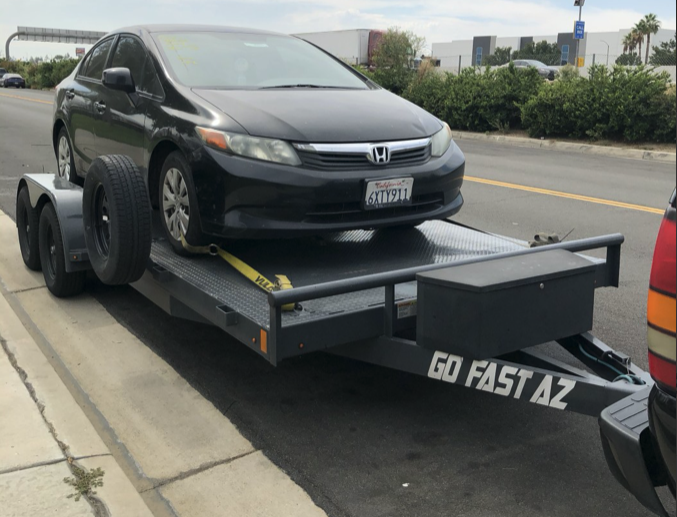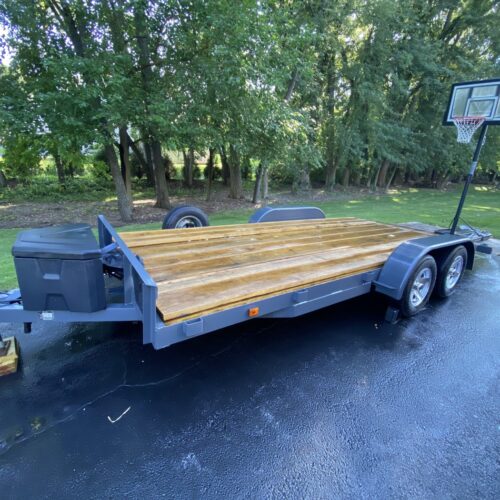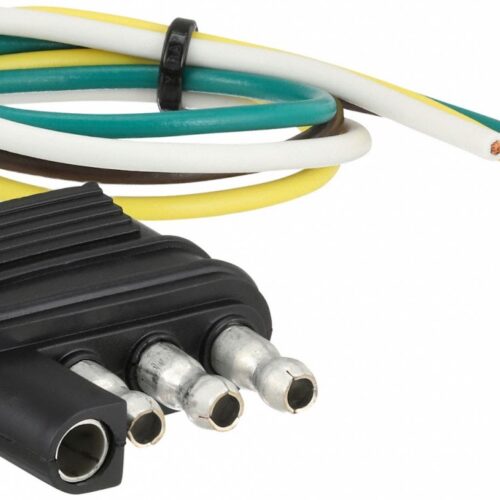In the dynamic world of vehicle transportation, flatbed trailers emerge as the unsung heroes. They providing a reliable and versatile solution for hauling cars across highways and beyond. Whether it’s transporting new automobiles from manufacturing plants, your car to the race track, or moving cherished classics to car shows, flatbed trailers play a pivotal role in ensuring the smooth and secure transit of vehicles. In this blog post, we’ll explore the intricacies of flatbed trailers designed specifically for hauling cars, unraveling the key features, operational considerations, and the indispensable role they play in the automotive logistics landscape.
Design and Structure:
Flatbed trailers for hauling cars boast a design tailored to the unique needs of the automotive industry. Key components include:
1. Deck Configuration
The deck, typically made of steel or aluminum, is engineered to accommodate various vehicle sizes. It’s often equipped with multiple ramps for easy loading and unloading.
2. Ramps
Ramps are essential for facilitating the loading and unloading of vehicles. They can be either fixed or hydraulic, providing a smooth transition for cars to ascend and descend from the flatbed.
3. Tie-Down Points
Securement is paramount when transporting vehicles. Flatbed trailers feature numerous tie-down points and specialized anchor systems to ensure cars are firmly secured during transit.
4. Wheel Chocks and Straps
To prevent any unwanted movement, wheel chocks are commonly used alongside sturdy straps to secure each vehicle in place on the flatbed.
Common Uses:
1. Auto Dealerships
New cars are often transported from manufacturing plants to dealerships using flatbed trailers, ensuring they reach their destination in pristine condition.
2. Car Shows and Events
Classic and high-end cars destined for shows or auctions are transported securely on flatbed trailers, providing protection from road debris and environmental elements.
3. Recovery Services
In the event of breakdowns or accidents, flatbed trailers are employed to transport damaged or disabled vehicles without further compromising their condition.
Operational Considerations:
Operating a flatbed trailer for hauling cars involves attention to detail and adherence to best practices, including:
1. Loading Technique
Drivers must employ proper loading techniques; ensuring that each vehicle is positioned securely on the flatbed and is well-distributed to maintain balance.
2. Securement Protocols
Thoroughly securing each vehicle with wheel chocks and robust straps is crucial to prevent shifting during transit, protecting both the cargo and the trailer.
3. Regulatory Compliance
Operators also must be aware of and comply with transportation regulations governing the hauling of vehicles, including weight restrictions and permitting requirements.
Flatbed trailers designed for hauling cars stand as a testament to the ingenuity and adaptability within the automotive logistics sector. Their purpose-built design, featuring specialized ramps, tie-down points, and securement systems, ensures the safe and efficient transportation of vehicles across vast distances. Moreover, as the automotive industry continues to evolve, flatbed trailers remain an indispensable asset, contributing to the seamless movement of cars and the enduring allure of the open road.




